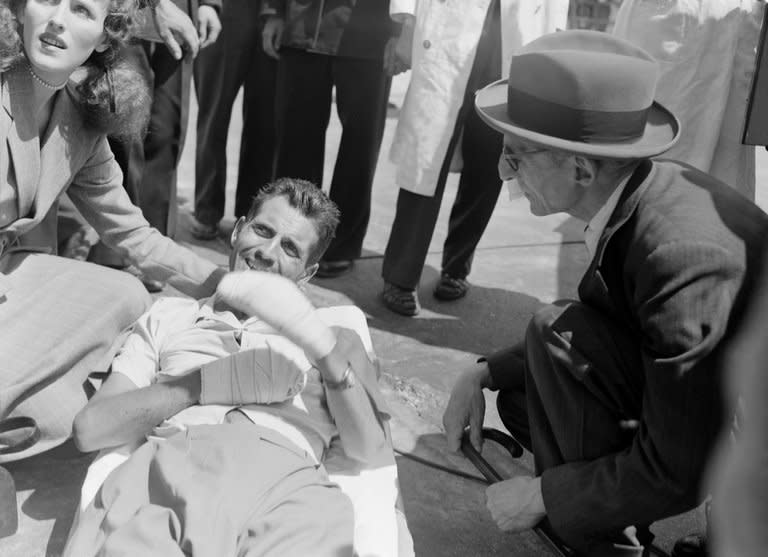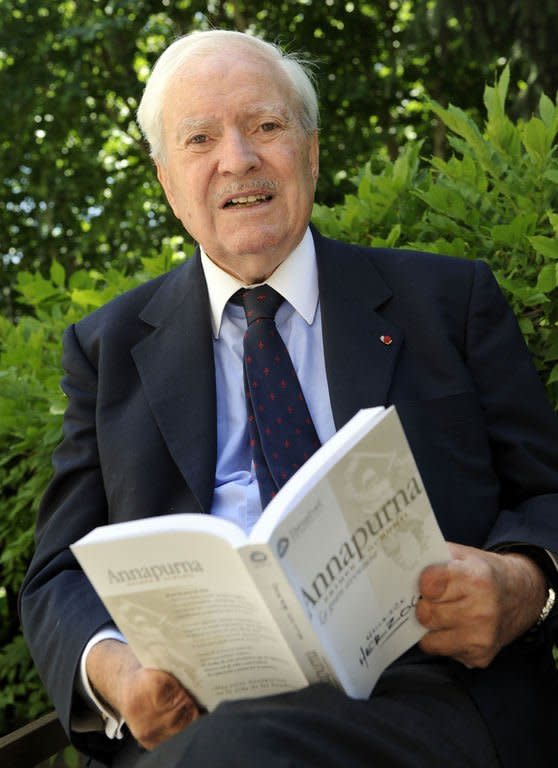French climber Maurice Herzog dies, aged 93
Maurice Herzog, the French climber who conquered Annapurna in the first recorded ascent of a peak above 8,000 metres, has died at the age of 93, the French Climbing Federation said Friday. Herzog led the ascent of Annapurna in 1950, reaching the Himalayan peak's summit without oxygen along with compatriot Louis Lachenal in a feat that caused a sensation around the world and was a huge source of national pride for France, at the time languishing in a morass of post-war gloom. Herzog and Lachenal's achievement was eclipsed three years later by Tenzing Norgay and Edmund Hillary's conquest of Everest. But Herzog went on to become a government minister, a businessman, a best-selling writer of books on climbing and a member of the International Olympic Committee. His later years saw his image tarnished however by accusations he had embellished his role in the ascent that made his name and by his depiction as a selfish, womanising liar in an ostensibly fictionalised portrait written by one of his daughters. It was at 2pm on June 3, 1950 that Herzog and Lachenal arrived at the summit of Annapurna in what he was later to describe as the most exquisite moment of his life. "Without that, I would never have had the life I had after," he said. He paid for the glory in the form of several fingers and toes that had to be amputated because of frostbite. "You can see what I have less of, but I feel what I have more of and it is incomparably greater," he later observed. A lifelong Gaullist, Herzog revelled in the lift the conquest of Annapurna gave to national morale at a time when the country was still struggling with the devastating aftermath of World War II. "Our feat was a feat for the nation," he said. "We climbed with thoughts of the country and all the youth that we represented in our hearts." On his return to France, Herzog, who had fought for the resistance during World War II and had more than a passing resemblance to Clark Gable, was feted like a cinema star. "It is difficult now to get a sense of it: he was our Lindbergh, our Redford, one of those rare Frenchmen known throughout the world," the academic Jean d'Ormesson wrote in 1997. Herzog's account of his defining climb, "Annapurna" sold 12 million copies worldwide and was translated into 40 languages. A business graduate, Herzog became a company director before President Charles De Gaulle, looking for a figure who could inspire the nation's youth, appointed him a minister for youth and sports. He became an MP and served as mayor of the town of Chamonix from 1968-77. Herzog's hero status began to be undermined in 1996, when the unedited version of Lachenal's memoir "Carnets de Vertigo (Vertigo Notebooks)" was published. The book had first appeared in 1956, shortly after Lachenal's death, but sections on the Annapurna climb that challenged Herzog's version of events were edited out. Lachenal's account suggests he had played the role of guide and, unlike Herzog, emphasises the contribution made by two other members of the team, Lionel Terray and Gaston Rebuffat. It also depicts Herzog as foolhardy, driven by a determination to reach the top that would have resulted in him perishing if he had been allowed to proceed on his own. This year has seen the publication of "Un Heros (A Hero)" by Herzog's daughter, Felicite, in which he is portrayed as a serial adulterer who cruelly neglected his children. Ostensibly a novel, it is effectively a damning portrait of a father she says "left his sensitivity and his humanity" in the Himalayas. It also suggests Herzog and Lachenal may never have actually got to the top of Annapurna -- a theory regarded as credible by some experts in light of their failure to leave a cairn at the summit and the inconclusive nature of the photographs they took.



